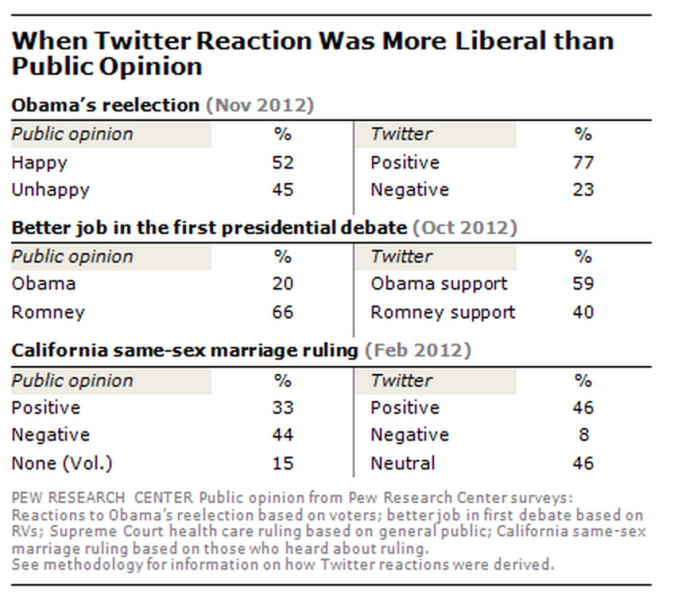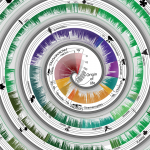The Silent Majority: Social knowledge Isn’t representative Of everyone
 This publish by using our group manager, Phill, obtained me serious about giant numbers. the concept that there are 1/2 1000000000 folks lurking on Twitter, viewing tweets however not logging on and in reality attractive actively on the platform, made me believe how we within the business discuss numbers, and the individuals behind them. as an example, take Twitter’s claim that 4.2 billion people saw Ellen DeGeneres’ Oscar %cfb0b5f8ccae71824d6eaeed9d5efb2c). four.2 billion. We fall over ourselves for giant numbers. Tongue twisters. we adore an enormous, punchy stat that screams authority. “take a look at this huge quantity! How large it is! How full-bodied!” possibly no longer full-bodied. but you get my level. we love to back ourselves up with data sandwiched well between citation marks.
This publish by using our group manager, Phill, obtained me serious about giant numbers. the concept that there are 1/2 1000000000 folks lurking on Twitter, viewing tweets however not logging on and in reality attractive actively on the platform, made me believe how we within the business discuss numbers, and the individuals behind them. as an example, take Twitter’s claim that 4.2 billion people saw Ellen DeGeneres’ Oscar %cfb0b5f8ccae71824d6eaeed9d5efb2c). four.2 billion. We fall over ourselves for giant numbers. Tongue twisters. we adore an enormous, punchy stat that screams authority. “take a look at this huge quantity! How large it is! How full-bodied!” possibly no longer full-bodied. but you get my level. we love to back ourselves up with data sandwiched well between citation marks.
“67% of individuals on this house are saying this about your brand.” “87% of people need to buy your product”
Statements we, and our opponents, ceaselessly present as truth – and positive, people are pronouncing these issues about brands. but sometimes we put out of your mind the bigger image. That those on-line aren’t the whole deal.
Let’s destroy it down
- There are around 7.2 billion individuals on this planet
- 6.4 billion of those people are literate
- 2.8 billion use the internet
- 73% of those individuals use social media
- forty two% of web users use a couple of social networks steadily
So. We’ve long past from 7.2 billion people to round 1.1 billion in a matter of seconds. And inside that 1.1 billion, who can we actually get to listen to?
those who shout loudest
The loudest individuals are the people who will seemingly get their own way after all. They don’t simply want a quiet existence. They’re the ones who, as an alternative of accepting that a health care provider’s appointment is in a week, will telephone up and argue their way into the surgical procedure that same day. They’re the ones who, when the heel of a reasonably new shoe breaks, don’t just lamentably settle for their new, shoeless, fate. They’ll march straight again to the shop, damaged footwear in-hand, and argue the toss that the shoe used to be manufactured poorly. i have a friend who, at nearly restaurant he goes to, makes a criticism. He may now not like the way in which the meat was once cooked. He might assume there was once somewhat an excessive amount of ice in his gin and tonic. GOD FORBID that anyone else gets given yet another potato than him. but every time, he makes positive his complaint is heard, and he makes positive he gets something back for it. A dessert, in all probability. just a little of money knocked off the invoice.  however then there’s the particular person subsequent to him, who – possibly regardless of having a sub-par experience – quietly will get on with it, eats their dinner and leaves without complaining. simply because they didn’t bitch, doesn’t intended that they enjoyed their dinner. It doesn’t mean that they’ll return. We’re frequently guilty of concentrating our efforts on those making probably the most noise. as a result of out of even that 1.1 billion figure we came to past, there are nonetheless a big percentage of those people who are shouting louder, making their voices heard extra steadily and extra clearly, than many others. these individuals don’t represent everybody. a clear instance of social media’s shortcomings as a reflection of wider society can be see from a Pew analysis middle learn about:
however then there’s the particular person subsequent to him, who – possibly regardless of having a sub-par experience – quietly will get on with it, eats their dinner and leaves without complaining. simply because they didn’t bitch, doesn’t intended that they enjoyed their dinner. It doesn’t mean that they’ll return. We’re frequently guilty of concentrating our efforts on those making probably the most noise. as a result of out of even that 1.1 billion figure we came to past, there are nonetheless a big percentage of those people who are shouting louder, making their voices heard extra steadily and extra clearly, than many others. these individuals don’t represent everybody. a clear instance of social media’s shortcomings as a reflection of wider society can be see from a Pew analysis middle learn about:
“at times the Twitter dialog is more liberal than survey responses, while at different instances it is more conservative. regularly it is the general negativity that stands out. a lot of the variation will have to do with both the slim sliver of the general public represented on Twitter in addition to who amongst that slice chose to take part in any one conversation.”
keep in mind what social knowledge is, and isn’t
Most marketers and analysts have moved beyond taking raw numbers from online dialog as representative of most people. certainly, in a lot of the analysis we post, such as our have a look at the recent Scottish Referendum, a big pinch of salt need to be all for any common conclusions made with social information.  As folks who have oceans of social information at our grasp, we should consider to now not completely focal point on the enormous data, and to check out to imagine the societal factors at the back of the info we’re analysing.
As folks who have oceans of social information at our grasp, we should consider to now not completely focal point on the enormous data, and to check out to imagine the societal factors at the back of the info we’re analysing.
“every social media platform includes with it sure affordances which structure its social norms and interactions and may not be consultant of other social media platforms, or basic human social habits … Twitter is used by about 10% of the U.S. inhabitants, which is definitely a ways, far from a consultant pattern. while facebook has a much broader diffusion price, its rates of use are structured by using race, gender, classification and other components and aren’t consultant. the usage of these sources as “large information” adaptation organisms raises important questions of illustration and visibility as demographic or social groups may have different habits — on-line and offline — and will not be totally represented or even sampled via current methods.” – UNC professor and Princeton CITP fellow Zeynep Tufekci
alternatively, the data that this social data isn’t fully representative of society as a whole, or of a model’s consumers as a whole, doesn’t negate the validity of that knowledge. we know that suggestions from peers, advice imparted on-line and different conversation means have a extra highly effective affect on consumer shopping for patterns than conventional marketing. understanding this discussion is the first step to having the ability to affect it. simply because a silent minority aren’t contributing with their very own voices, which you can wager that they’re sticking around to look what the others have to assert. Going again to that restaurant analogy – the truth that the fellow kicking up a fuss about his meat is so vocal is making a favorable influence on the other diners. The restaurant knows the difficulty and might tackle it. they are able to be sure all of the steaks are being cooked to order correctly. The restaurant wants to know what’s being said by using probably the most vocal, as essentially the most vocal are incessantly their key demographic. they are shaping the emotions and thoughts of these around them; the opposite diners on the table. with the aid of influencing these vocal individuals, the restaurant is able to affect the workforce as an entire. applying this to manufacturers, it is nonetheless necessary to understand that although social information will not be completely representative of 7.2 billion individuals, the percentage of people who find themselves online are steadily those people who are most vital to them. positive, social listening knowledge would possibly not have the ability to tell American attire whether any person within the Australian outback without a internet is an incredible fan of their disco pants, but it can inform them that there are a truckload of ladies of their ’20s in particular towns who’re begging for brand new stock, prepared for the weekend. Social listening information can add implausible price to a model’s advertising and marketing strategy. Let’s just no longer put out of your mind these voices we won’t have the ability to hear. Digital & Social Articles on industry 2 group
(191)















